


Did you know that individuals using solar power generators are slashing their electricity bills by nearly 75%? This shift isn't just a trend—it's a revolution in energy consumption.
As the world grapples with climate change and energy shortages, the importance of solar power generators skyrockets. Harnessing the sun's energy isn't just eco-friendly; it's a financial game-changer.
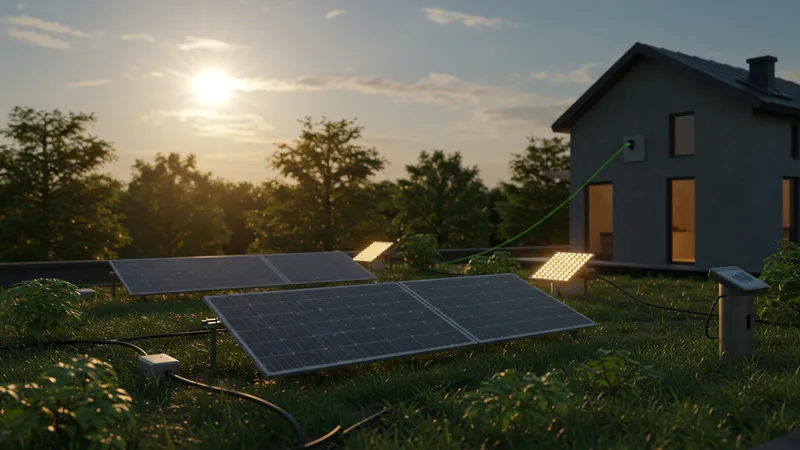
The modern household can rely on these portable solar power generators during unexpected power outages, ensuring uninterrupted comfort and safety. You've heard of advancements in battery storage, but these generators go beyond, offering sustainability with ease. But that's not even the wildest part—you won't believe the innovations just unveiled in this field!
Small as they might be, these units pack a powerful punch, equipped with cutting-edge technology that maximizes energy efficiency like never before. The move towards solar isn't just an environmental choice; it's becoming a necessity as traditional energy costs skyrocket. What if you could power your entire home with just one generator? But what happens when solar power and AI unite, creating even more unbelievable possibilities?
What happens next shocked even the experts. This collaboration between cutting-edge technology and environmental innovation is set to redefine how we view energy forever. Ready to discover how this impacts not just your home, but the entire planet?
In a market where traditional energy solutions once reigned supreme, solar power generators have quickly captured consumer interest. It's not just about eco-conscious consumers anymore; mainstream buyers are jumping ship as well. Surveys reveal that sales of solar generators have doubled in just the last year alone, driven by a combination of rising energy costs and increasing public awareness of climate change implications. But there's a remarkable twist to whom these generators are attracting—you won't guess the fastest-growing customer segment.

Urban dwellers are now leading the charge in adopting solar energy solutions, a surprising development considering their typical disconnection from natural sources. The convenience and portability of modern solar generators, compact enough to fit on apartment balconies, are facilitating this unexpected trend. This shift not only highlights the adaptability of solar technology but underscores a larger cultural movement towards self-sufficient energy living. But here's the most intriguing part: why are urban millennials ditching their conventional power sources?
It's not just individuals driving this surge; businesses, particularly in logistics and events sectors, are clamoring for solar generators too. Portable power solutions have become essential for creating sustainable, mobile work environments. Experts suggest that the logistical advantages and positive brand image associated with solar use are key reasons for this uptick. Yet, a paradox remains—why are some competitors hesitant to pivot away from traditional power sources despite clear benefits?
What experts didn't anticipate is how quickly solar power adoption would integrate into mainstream schooling, with many institutions now embracing it for their electrical needs. Forward-thinking educational bodies view solar installations as both a practical solution and an educational tool for future generations. These initiatives are paving the way for a more sustainable future, bridging technology with education. But what you read next might change how you see this forever, as the real game-changer lies in the evolving technology behind these panels.
Within recent years, solar panel technology has undergone rapid advancements, bringing efficiency and affordability to the forefront. It's not just about larger panels anymore; the emphasis has shifted towards developing more powerful yet smaller alternatives. Recent innovations in photovoltaic cells have led to a remarkable increase in energy conversion rates, meaning today’s solar panels harness the sun more effectively than ever. But the truly unexpected part is how these advancements are breaking old limitations and introducing exciting new capabilities.
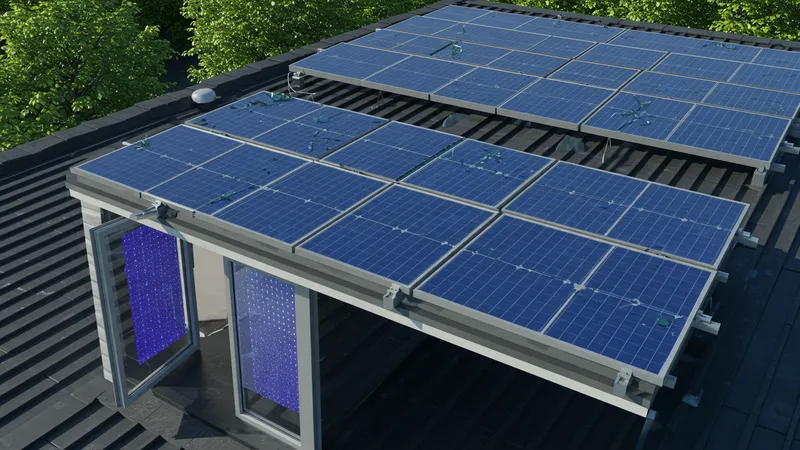
One of the most significant breakthroughs is perovskite solar cells. These cells are revolutionizing the industry with their lightweight and flexible properties, allowing for seamless integration into everyday household items like windows and fabrics. Imagine curtains that not only shield you from the sun but also power your electronics. This advancement offers a paradigm shift—energy-harvesting materials that blend into our living spaces without disruption. Industry insiders suggest we are on the brink of seeing these materials become commonplace. But that's only scratching the surface of what’s to come.
Energy storage has long been a bottleneck for solar technology, but recent developments are changing this narrative. Advanced batteries now offer longer duration storage and faster charging times, addressing one of the most criticized aspects of solar power dependency. These improvements mean greater energy independence for consumers, giving them confidence to rely solely on solar-generated power. This change is spearheading a major shift in market confidence and widespread adoption. Yet, there's an unexpected twist—technological developments in this field are not stopping here.
Researchers are looking into cutting-edge AI integration with solar technology to further optimize energy efficiency and production output. Imagine a system that learns your energy consumption habits and adjusts its operation to maximize savings. This synergy between AI and solar technology is opening doors to possibilities that seemed mere science fiction a decade ago. But this is just the start—what happens when these innovations fully infiltrate everyday life, offering unheard-of levels of efficiency and autonomy?
As natural disasters and unforeseen emergencies become increasingly common, solar power generators have emerged as indispensable tools for ensuring reliable power. The adaptability and mobilization potential of these solutions empower users to maintain essential functions when the grid fails. In remote locations where traditional infrastructure is inadequate or absent, solar generators provide critical relief. But what surprises most is how they're becoming a vital part of emergency preparedness worldwide.

Solar power’s ability to deliver consistent energy in the harshest conditions gives it a vital role in humanitarian aid efforts. Organizations find that deploying solar generators can provide light, operational communication devices, and medical equipment—a game-changer when speed and reliability are of the essence. The latest deployments include features like inflatable designs for rapid deployment and transportation, changing how we plan for such scenarios. There's a fascinating aspect to these transformations: they’re now influencing policy decisions across the globe.
Military operations are also increasingly incorporating solar generators, emphasizing stealth and sustainability. The military's need for dependable, low-profile energy sources is leading to the development of tactical solar fields embedded in operations. These setups allow for silent, emission-free power generation—crucial for maintaining operational secrecy and strategic advantage. Yet the most astonishing aspect here is the unexpected crossover of technology from defense to civilian applications, transforming both sectors in real time. Could this signal the dawn of a new era in global energy strategy?
Even space exploration has turned to solar technology for its lightweight and consistently reliable output. Solar panels power satellites and space stations, such as the International Space Station, ensuring sustainability beyond Earth’s atmosphere. With private companies pushing into space tourism, solar power is poised to become a fundamental part of extraterrestrial infrastructure. But can solar energy transcend the bounds of Earth entirely, and what would that mean for the future trajectory of power technology developments on a global scale?
Switching to solar power generators isn’t just an environmentally beneficial choice—it’s a strategic financial decision. Consumers are starting to see tangible savings on their utility bills, incentivizing further adoption. Recent studies show homeowners can recoup their initial investment within just a few years due to lower operational costs and federal incentives. The numbers are compelling, yet there’s a deeper layer to this financial transformation that most haven’t considered.

The potential appreciation in home value when equipped with solar technology is another unexpected financial booster. Homes with solar power systems often have a higher resale value, attracting more eco-conscious buyers willing to invest in sustainable living. This renovation aspect is changing traditional real estate dynamics by pushing green technology to the forefront of property development discussions. Surprisingly, even financial advisors are now recommending solar transition as part of long-term investment strategies, but what’s their reasoning?
Businesses are reaping significant benefits, too, as commercial solar installations often result in major tax breaks and subsidies. The decrease in overhead costs translates to enhanced profitability, freeing resources for growth and innovation. As companies race to adopt, the broader economic impact ripples through supply chains and industries, a domino effect few could predict. However, not all businesses are aware of the full extent of these opportunities, which raises the question: why are some still hesitating to switch?
Globally, nations are realizing the importance of tapping into solar energy to bolster their economies. National policies geared towards encouraging solar adoption aim to reduce foreign energy dependence, strengthening economic resilience. This international shift suggests future geopolitical landscapes may favor greener countries as leaders in energy policy. As market forces align with technological advances, how will this influence our global interconnectedness? It’s an unprecedented transformation you’ll want to track.
The evidence in favor of solar power as an environmental savior is hard to ignore. Solar generators produce clean energy, significantly reducing carbon footprints and pollutants associated with fossil fuels. Their role in combating climate change is becoming increasingly crucial as global warming effects escalate. However, few are aware of the scope of ecological benefits tied to broader solar implementation—until now.
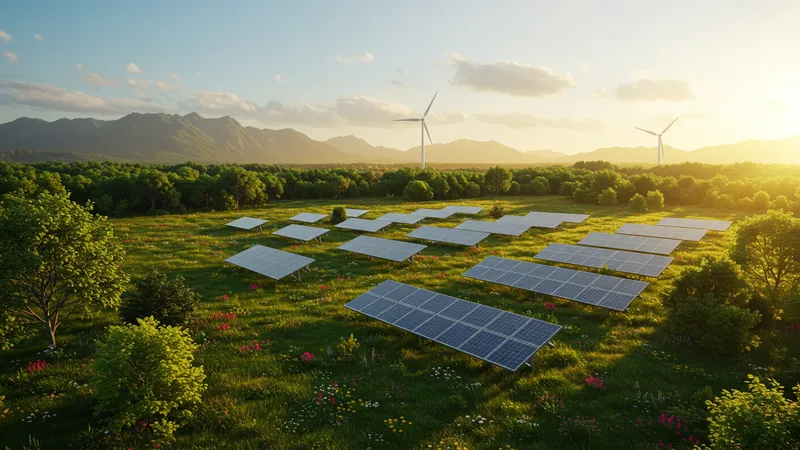
Solar power's minimal environmental disruption compared to other energy sources is its crowning achievement. Unlike fossil fuels that deplete resources and emit harmful byproducts, solar energy thrives on inexhaustible sunlight. Its ability to drastically cut greenhouse gas emissions positions it as a prime driver in the global pursuit of carbon neutrality. But that’s not where the environmental impact ends—the innovation surrounding solar technology promises more remarkable outcomes.
The rise of solar farms in previously barren lands has transformed ecosystems, offering new habitats for wildlife. These installations are surprisingly beneficial for biodiversity, providing sheltered environments for various species. Programs integrating solar panels with agriculture—known as agrivoltaics—show promise in producing food alongside energy, an intersection few believed possible. But what happens when the dynamics of nature and technology further converge in unforeseen ways?
Rethinking waste is another platform where solar tech proves its merit. By repurposing materials for solar production, the industry lowers material wastage and sets new standards for sustainable manufacturing practices. This closed-loop approach challenges conventional industrial norms and inspires broader environmental responsibility. Still, an intriguing question remains around future innovations that this synergy of sustainability might unlock. Could these efforts redefine the blueprint for industrial revolution amidst a climate crisis?
Solar power generators are more than just technological novelties—they are empowering remote communities throughout the globe, offering them access to crucial resources previously unavailable. In regions where electricity is a rare luxury, solar power democratizes energy, transforming lives in extraordinary ways. Truly, these changes highlight the social benefits often overlooked in the discussion around renewable energy.

Many remote villages now leverage solar power for basic utilities such as lighting, refrigeration, and water purification, significantly elevating living standards. These improvements are not just conveniences; they open doors for better healthcare, education, and professional opportunities. This newfound access to power catalyzes economic growth and encourages sustainability at the grassroots level. Seeing the transformative results in these communities not only shifts perceptions but accelerates the adoption of green technologies worldwide.
Organizations focused on rural development have increasingly turned to solar solutions as key enablers for their projects. With solar technology, communities gain autonomy and resilience, reducing dependency on external aid. But what's capturing everyone’s attention is the ripple effect—enhanced educational opportunities that empower individuals with practical and theoretical knowledge to innovate. Could these initiatives be the key to nurturing the next generation of environmental leaders?
The integration of solar power into rural areas fosters stronger societal bonds, as communities work together to maintain and optimize their systems. The communal sense of responsibility and pride in self-sourced electricity is fostering innovation and cooperation. Yet, sparking curiosity are the unexpected cultural shifts that come along with this empowerment, changes that redefine what it means to be connected in our modern era. As these stories unfold, we’re witnessing an evolving narrative where people not only endure but thrive through renewable energy.
Gone are the days when solar power required hefty installations and cumbersome panels. The personal solar generator market is booming with portable and efficient devices designed for convenience and versatility. With cutting-edge advancements, these solutions are perfect for campers, off-grid adventurers, and tech-savvy urbanites alike. But what's catching consumers off guard is the array of features now available at their fingertips.

Modern portable solar generators boast enhanced battery capacity, rapid charging capabilities, and even connectivity with smart devices, marking a revolutionary step in personal solar technology. Imagine having the ability to charge all your electronic devices using just sunlight, wherever you are. This innovation extends freedom to those seeking energy independence during travel, with the once-believed barrier of limited power becoming a myth. The potential applications seem countless and continue to expand rapidly.
With companies developing robust models that are both water-resistant and temperature resilient, consumers' expectations are being exceeded. These features enable users to undertake long trips in any climate or weather without worrying about energy scarcity. Unseen previously, this evolution signals a move toward a future where personal energy autonomy is not just possible but readily accessible. Yet, there's even more happening in the realm of portable power worth discovering.
Interestingly, the price points for these advanced technologies continue to drop, making them accessible to a broader audience. This affordability wave demystifies solar power, inviting a larger demographic to experience its benefits firsthand. It’s a sector on the brink of broad mainstream appeal, with experts predicting significant market shifts as consumers prioritize sustainability and self-reliance. What lies ahead for personal solar solutions? The insights reveal much more than meets the eye.
Public policy around the world is increasingly favoring renewable energy sources, with solar power taking center stage. Recent legislation has introduced tax incentives, subsidies, and grants to encourage solar adoption on both residential and commercial fronts. The momentum of these policies is undeniable, yet understanding their full implications reveals more than initial figures suggest.

Governments are eager to reduce reliance on non-renewable energy, addressing climate goals while fostering economic independence. These strategic moves involve funding large-scale solar installations and revising building codes to incorporate solar options as standard. Furthermore, policies targeting energy-efficiency improvements in infrastructure are reshaping community landscapes and framing renewable energy as a mainstream solution.
Developed countries aren’t the only ones benefiting; emerging economies are also gaining access to solar technologies, promising a drastic reduction in energy disparities worldwide. As policies become more inclusive, they empower people from lower-income backgrounds to transition towards sustainable power sources. With more countries developing robust infrastructure for solar integration, solar energy’s global proliferation is expected to soar.
Witnessing these policy shifts unveil beneficial opportunities and hidden barriers alike, ushering a new era in energy legislation. Energy strategists proposition that solar may become not just a choice but a mandated element of future development. This future-oriented outlook reflects a global commitment to carbon neutrality and economic innovation through renewable energy solutions. How will these policies shape the economics of energy worldwide? The unfolding answers hold surprising insights.
Too often, energy grid failures can cause widespread blackouts, disrupting events or bringing entire cities to a halt. Solar generators provide a realistic contingency plan for grid stability during such unforeseen events. Typically thought of as supplementary, these generators are becoming essential components in maintaining uninterrupted power supply. But their impact runs deeper than commonly perceived.

Solar generators are increasingly integrated with smart grids, providing real-time energy redistribution and alleviating pressure on traditional infrastructure. By stabilizing voltage and balancing loads, they reduce the likelihood of grid-related disturbances. As urban areas become denser, these solutions present newfound importance, aligning with sustainable urbanization strategies while minimizing energy wastage.
Technological advances in solar grid systems allow for seamless integration with existing infrastructure, optimizing energy production during peak hours and enhancing overall grid reliability. This synergy goes beyond power generation; it influences policy planning and urban design, encouraging cities to plan for sustainable growth. These developments illuminate the transformative role solar technology plays in realizing resilient urban ecosystems.
The growing focus on decentralized energy systems speaks volumes about future infrastructure trends—empowering communities with state-of-the-art solar generators minimizing energy hierarchy dependence. Consumers are gaining autonomy, sparking entrepreneurial innovation in local energy management. But what lies beyond this paradigm shift in power dynamics promises an even broader discussion on the democratization of energy.
Solar technology adoption isn’t just transforming the environment or economy—it’s challenging cultural norms across the globe. In societies long dominated by traditional energy paradigms, solar power represents a shift toward global consciousness and sustainable living. Yet the cultural ramifications of this transition are both profound and far-reaching.
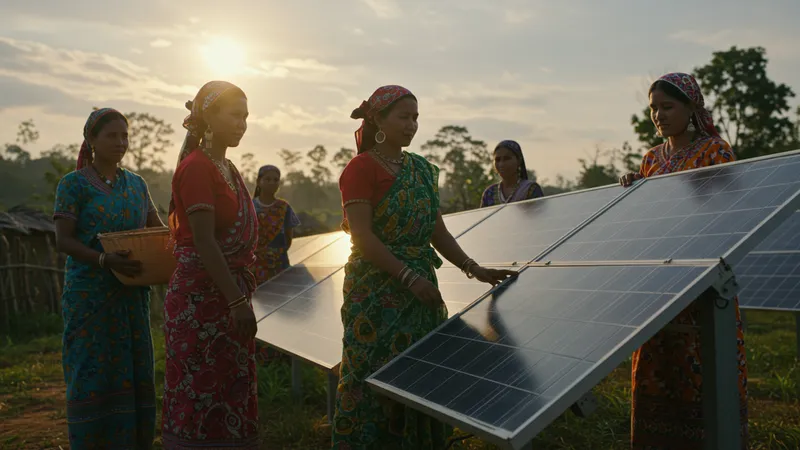
In regions where patriarchal dynamics traditionally govern resource distribution, solar technology empowers women by affording them autonomy in energy-related decisions. As females gain access to solar-powered devices, they achieve greater independence, lifting constraints that once limited their roles. This cultural shift ushers widening gender equality and diversifies leadership within communities.
Globally, solar innovations encourage youth engagement with engineering and environmental sciences, promoting new career pathways unseen before. The interconnectedness fostered by solar technology in educational settings transcends borders, fostering cross-cultural collaboration and addressing shared challenges. This educational empowerment goes beyond conventional frameworks, producing a tech-savvy, environmentally aware generation prepared for future challenges.
As people journey toward solar-led living, stereotypes around technology usage dissipate, challenging historical notions of accessibility. Solar adoption breaks barriers between urban and rural, affluent and disadvantaged, establishing a universal platform of equity. Could this unity catalyze broader societal transformation, redefining how we approach global participation in a continuously evolving world?
Visualizing solar technology's future implies imagining a world unfettered by the limitations of traditional energy systems. Unified by solar initiatives, countries are already employing solar infrastructure as building blocks for sustainable rapid industrialization. From smart homes to solar-paved highways, solar power holds the key to viable, pollution-free futures.
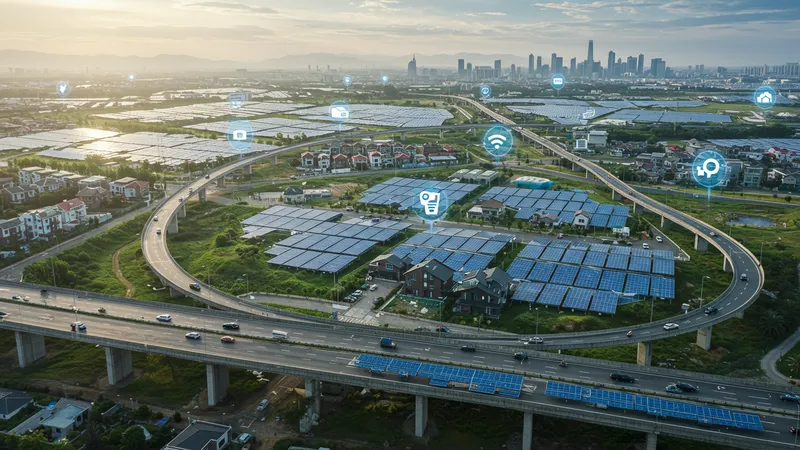
The transformative vision lies not only in technological advances but in fostering a global platform where innovation thrives. Despite current limitations in storage and efficiency, cutting-edge research promises breakthroughs that could soon render these concerns obsolete. The integration of solar with burgeoning technologies like IoT and AI predicts a future ripe for unprecedented energy autonomy.
Forward-thinking communities are reframing their development through solar-powered lenses, reimagining public spaces, and bolstering local economies. This dynamic transition envisions widespread photovoltaic implementation enhancing communal well-being and progress. But even as these dreams materialize, intriguing queries about the essence of progress challenge our expectations. How will these integrated technological landscapes redefine contemporary society?
Coinciding with these advancements are questions regarding equitable access and ethical deployment of solar solutions. As the energy landscape reshapes, maintaining accessibility becomes as crucial as technological brilliance. The solar revolution pushes us to reflect not only on our capabilities but our responsibilities in stewarding this true force of nature. With future innovations, challenges, and discoveries awaiting, this solar journey is just beginning.
The surge of solar power generators signifies more than a shift in energy preference—it's a bold leap toward sustainable revolution. Across the globe, solar technology's integration is redefining boundaries, eco-lifestyles, and economic frameworks. This renewable force harnesses untapped potential, shaping a vibrant future void of yesterday's limitations and full of promise.
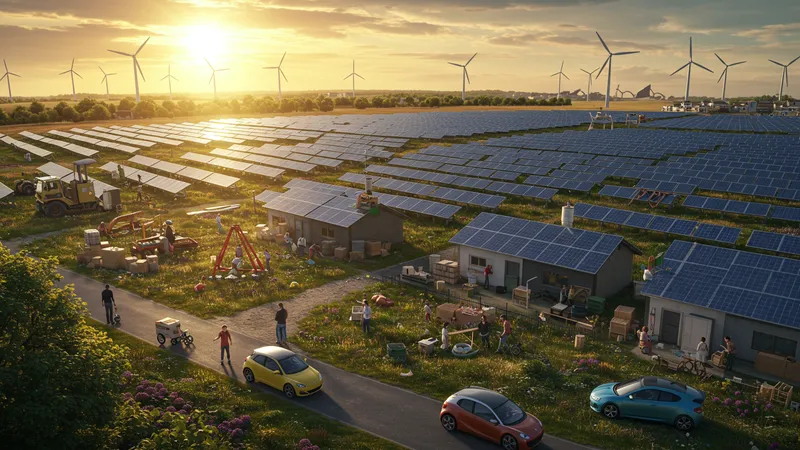
Solar power challenges us to rethink energy dependency, urging us toward a greener tomorrow where every ray counts. Innovative strides make solar a cornerstone in energy transition, paving the way for an interconnected global ecosystem through renewable solutions. By embracing and promoting solar adoption, individuals, communities, and nations ignite a catalyst for immense environmental and societal growth.
Do your part by sharing this enlightening journey with others, supporting the movement towards a clean, sustainable future for all. Join the conversation, spark curiosity, and contribute to a world where solar power lights the path to future sustainability—because every initiative, no matter how small, radiates new possibilities for change.